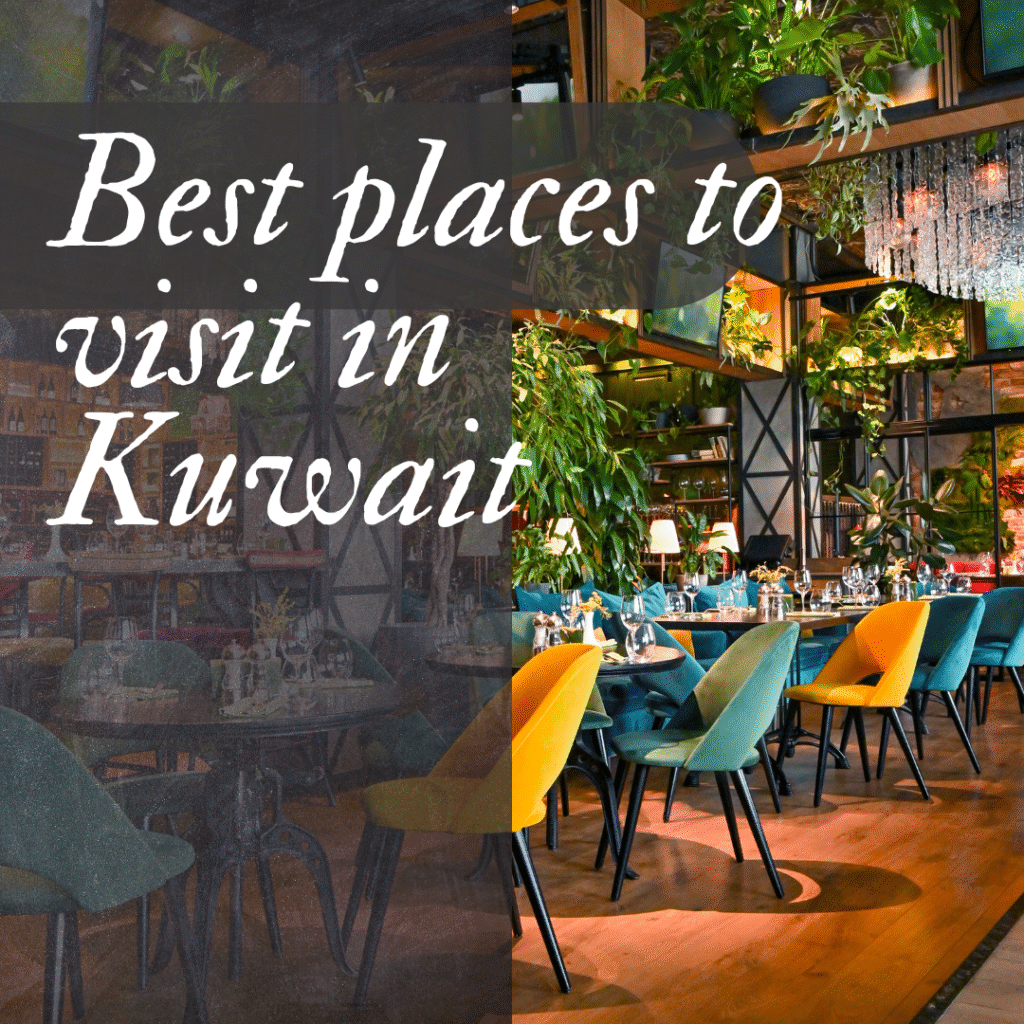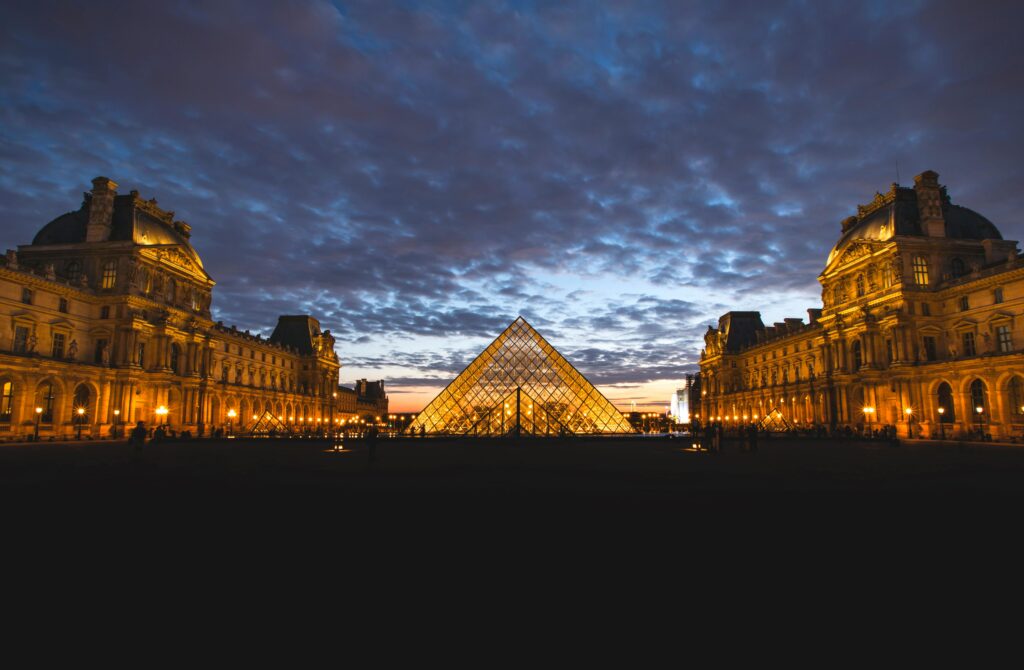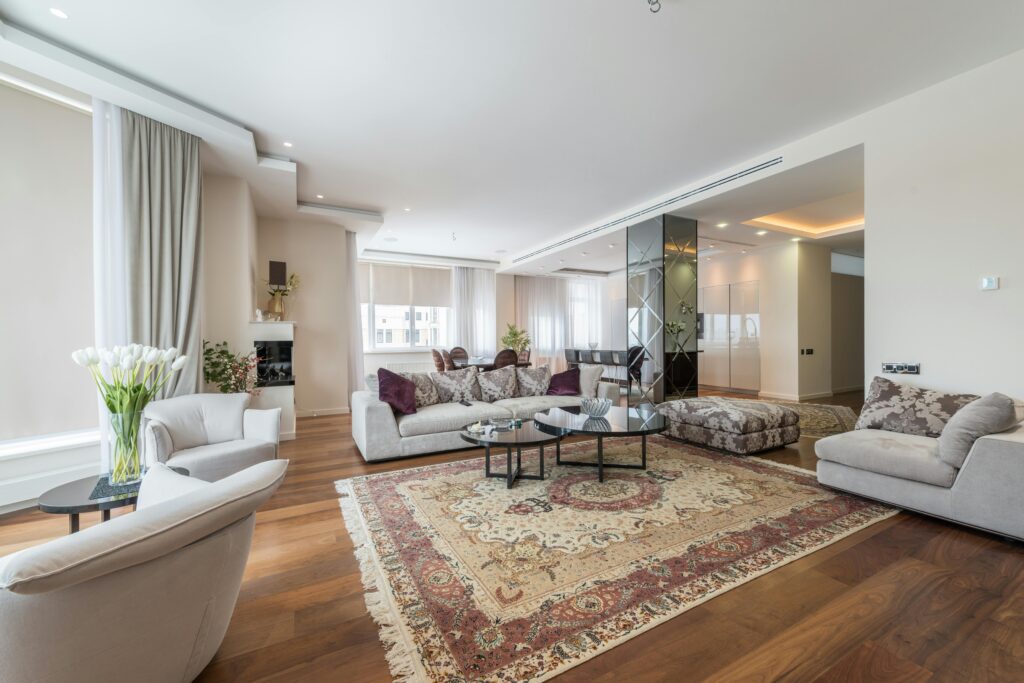Kuwait, situated on the northern shore of the Arabian Gulf, is often overshadowed by its more glamorous Arab neighbors, such as Dubai or Doha. Kuwait, however, provides a genuine and fascinating Middle Eastern experience for the discriminating tourist. Kuwait is a place worth visiting due to its rich history and cultural heritage, which seamlessly blend traditional customs with modern city living. These are the top tourist destinations in Kuwait, whether you’re there for its museums, peaceful waterfront, or vibrant marketplaces.

Towers in Kuwait
The Kuwait Towers, which dominate Kuwait City’s skyline, are the most recognizable image of Kuwait. The towers, which stand 187 meters tall and were officially opened in 1979, combine Islamic architecture with contemporary design. The central tower, which has a viewing sphere and a rotating restaurant with expansive views of the city and the Arabian Gulf, is one of three towers. Water is stored in the second tower, while electrical equipment is kept in the third. Beautiful vistas and the chance to take pictures of the shining skyline as it turns into darkness are two benefits of visiting around sunset.
The Al-Masjid Al-Kabir, or Grand Mosque
The Grand Mosque, the biggest mosque in Kuwait, is a work of art as well as a house of prayer. Capable of holding up to 10,000 worshipers, it was constructed in the classic Islamic style and is renowned for its expansive stone gardens, intricate calligraphy, and striking blue and gold roofs. Visitors who are not Muslims may take a guided tour of the mosque, which offers information about Islamic architecture, ceremonies, and the mosque’s significance in Kuwaiti everyday life. It is necessary to dress modestly, and visitors are often provided with robes upon arrival at the building.
The Mall at Avenues
The Avenues Mall is a lifestyle center rather than just a shopping mall, considering that malls may not typically be perceived as cultural attractions. One of the biggest shopping centers in the Middle East, it has many distinct architecturally styled areas, including Fame, Grand Street, and The Souk. It is a must-visit for both shopping enthusiasts and cultural seekers, as it offers upscale fashion labels, international restaurants, entertainment areas, movie theaters, and even a traditional market experience in the “Souk” section.
Island of Failaka
Approximately 20 kilometers off the coast of Kuwait City, Failaka Island presents a distinct contrast to the bustling city. The island is rich in archeological and historical significance. Ancient Greek residents once called it home, and artifacts from that period, including temple remains and coins, stay there. Failaka recounts the Gulf War as well. As evidence of the island’s involvement in the battle, several of its structures have been maintained while being destroyed. Tourists may relax on the beaches, ride camels, and explore the ruins. Regular boat and ferry services are available from the mainland, and for those seeking a guided experience, trips are also offered.

The Museum of Tareq Rajab
For those interested in history, the Tareq Rajab Museum, located in Kuwait City’s Jabriya neighborhood, is a real treasure trove. This private museum, established by Tareq and Jehan Rajab, features a distinctive collection of Islamic art, manuscripts, jewelry, pottery, and traditional clothing from across the Islamic world. The museum seems like a hidden treasure, as it is not well-known and is not openly promoted. A greater understanding of Islamic culture and Kuwaiti history is facilitated by the museum’s compact space and unique artifacts.
Al-Mubarakiya Souq
Souq Al-Mubarakiya, one of Kuwait’s oldest and most traditional marketplaces, is a sensory experience. The souq, which has been in operation for over 200 years, offers a diverse range of products, including gold, dates, traditional Kuwaiti delicacies, spices, textiles, and fragrances. At the traditional restaurants scattered throughout the market, guests can enjoy regional specialties such as grilled fish, freshly prepared falafel, and matchbooks, a rice dish often served with pork or fish. It’s also a terrific location to meet friendly local businesses and purchase items.
The National Museum of Kuwait
The Kuwait National Museum offers a comprehensive overview of Kuwait’s history, spanning from antiquity to the present, and is situated near the Seif Palace and the coastline. Archaeology, anthropology, and legacy are among the areas of the museum that French architect Michel Ecochard created. With its remarkable collection of Islamic relics, the Dar al-Athar al-Islamiyyah (The House of Islamic Antiquities) is a highlight. Despite suffering significant damage during the Iraqi invasion, the museum has since been repaired and continues to be an essential part of the nation’s cultural character.
Park Al Shaheed
Al Shaheed Park, a verdant oasis in the middle of the desert, is located on the outskirts of Kuwait City. The park has museums, modern art installations, jogging and walking paths, and a botanical garden. It is divided into two stages, the latter of which features a youth center, skate park, and theater. Locals love the park for family gatherings, cultural activities, and evening strolls. Additionally, it holds public discussions and exhibits that raise awareness of Kuwaiti culture and the environment.
Aquarium & Scientific Center
One of the best facilities for learning and recreation in the area is the Scientific Center, located in the Salmiya neighborhood. It has an IMAX cinema, a children’s exploration area, and a top-notch aquarium. Sharks, rays, and coral species are among the marine life from the Arabian Gulf that is on display at the aquarium. Additionally, it has a dhow port, which preserves Kuwait’s nautical heritage by housing classic Kuwaiti sailing boats.
The Island of Green
An excellent place for a family outing is Green Island, a man-made island off the coast of Kuwait. The island, connected to the mainland by a causeway, features amphitheaters, restaurants, playgrounds, and picnic areas. It was the Gulf’s first artificial island and is now a well-liked destination for tourists. Its paved walkways allow visitors to stroll, participate in water sports, or take in the Gulf waters’takingry.
Palace of Seif
One of the most exquisite structures in the city is the Seif Palace, located near the Grand Mosque and the Kuwait National Museum. Although the palace is closed to the public, photographers often visit it due to its breathtaking Islamic architecture, which features blue tiles and a unique gold-plated watchtower. It symbolizes the historical administration of Kuwait as well as the home of the reigning family.
The Mirror House
One of Kuwait’s most distinctive sights is the House of Mirrors. Italian-Kuwaiti artist Lidia Al-Qattan has transformed this private home into an extraordinary space, featuring beautiful mirror tiles on the walls, floors, and ceilings. The artist or her family leads tours, offering a very personal and creative look into one woman’s desire to transform her house into an artistic creation. It’s unique, individual, and remarkable.

Concluding Remarks: Why Kuwait Should Be on Your List of Destinations
Kuwait offers an unparalleled fusion of technology and history yet lacks the expansive deserts of Saudi Arabia or the tall towers of Dubai. Its small size facilitates exploration, and there is no shortage of things to see and do, thanks to its numerous attractions, rich history, and friendly residents. Kuwait is a fascinating place that often shocks first-time visitors, regardless of their interests—whether archaeology, Islamic art, relaxing by the sea, or simply discovering a new side of the Gulf. There has never been a better time to find this undiscovered treasure of the Middle East, particularly with its growing emphasis on tourism and cultural preservation

Leave a Reply